- Home
- Orhan Pamuk
The Red-Haired Woman Page 13
The Red-Haired Woman Read online
Page 13
Our household economics were equally opportunistic. Since my company had close ties to the municipal authorities and the national ruling party, we knew in advance what areas had been slated for urban redevelopment: the construction of residential high-rises, new roads, and so on. We bought land accordingly, as well as taking advantage of government subsidies for residential projects. I never thought there was anything unethical about this practice. But I did wonder sometimes what my father would say if he knew that his son’s business interests involved rubbing elbows with the ruling party leaders, attending their ostentatious cultural events and fund-raisers, and listening to the pompous speeches they gave at the ceremonies. For years, I had nursed an abiding anger at my father for walking out on us. But now I didn’t mind so much anymore, because I knew that he wouldn’t approve of what I was doing.
It seems we would all like a strong, decisive father telling us what to do and what not to do. Is it because it is so difficult to distinguish what we should and shouldn’t do, what is moral and right from what is sinful and wrong? Or is it because we constantly need to be reassured that we are innocent and have not sinned? Is the need for a father always there, or do we feel it only when we are confused, or anguished, when our world is falling apart?
30
IN MY FORTIES, I began to suffer from a mild insomnia, just as my father had. I would lie awake in the middle of the night until finally, thinking I might as well do something useful, I would move to the studio to pore over whatever files, construction brochures, and contracts I’d brought home from the office. But that material would depress me, and I would only end up even wider awake than before. Eventually, I discovered that reading the Shahnameh or Oedipus the King purged my thoughts of money and figures and helped me sleep better—like hearing an old fairy tale. Though they were both stories about terrible guilt, my own guilt seemed to subside when I read them again.
Reading the same thing over and over like a prayer was soothing, but in time I became aware that my mind did not respond equally to every scene. Both books were central to the cultures in which they’d originated—Greece or the West on the one hand, and Persia or the East on the other—but however many times I reread them, I could relate to only so many of the troubles their protagonists suffered or the major ethical and existential questions that were posed. Take Oedipus’s sexual relationship with his mother, Jocasta: I couldn’t picture it at all but only define it in my mind as a “great crime” before hastily moving on. You might say I was unable to think about it in visual terms.
Another example was the tantalizing search for the father one had never known, the common quest in which Oedipus and Sohrab bore a brotherly resemblance. I’d never dwelled too much on how either had grown up separated from his true father. Perhaps I was afraid that if I did, I might become aware of my own want. When my father left me (as Rostam left Sohrab) and went to prison, later to make a new life for himself, I sought out father figures to replace him and guide me. And I still thought often of Master Mahmut: somewhere in the back of my mind, an ever-shrinking man was digging a well right through the core of the earth, and sometimes he entered my dreams in other guises and told me stories.
One gloomy autumn evening, I went to meet Mrs. Fikriye, chief librarian of the Topkapı Palace Manuscript Library, to whom I was referred by Dr. Haşim, a mutual friend from the Deniz Bookstore, who taught literature at a university. He had informed her of my interest in Rostam and Sohrab, and Mrs. Fikriye had told him, “He should come by so I can show him our beautiful illustrated Shahnamehs.” (There were still plenty of good people left in Istanbul.) As we sat talking in Sultan Abdulmajid’s residence on the palace’s vast grounds, she reminded me that the hopeless search for a father could have consequences I hadn’t foreseen.
Though the museum’s directors never exhibited it, the Topkapı Palace Library held one of the world’s finest collections of Persian illuminated manuscripts, its inventory from the fifteenth and sixteenth centuries rivaling that of the gallery of the Golestan Palace in Tehran. The seeds for this collection were sown in 1514 when Sultan Selim I, having defeated Shah Ismail in the Battle of Chaldiran, south of Lake Van, proceeded to loot Tabriz, returning to Istanbul with a bundle of books and manuscripts. Shah Ismail’s treasures had included a number of illuminated Shahnamehs, decorated volumes of exceptional beauty, which he had seized from the old Turkmens and the Uzbek Shaybanids he, in his turn, had conquered. In the two centuries to follow, the Safawids and the Ottomans would go to war again and again, and Tabriz would switch hands ten times. But after every battle, when the Safawids sent their peace envoys to the Ottomans, they were sure to include an offering of the illustrated Shahnamehs, whose beauty they were so proud of, and soon these manuscripts began to accumulate in the Topkapı Palace treasury.
Mrs. Fikriye generously allowed me to look through the most exquisite of the library’s four- or five-hundred-year-old Shahnamehs, and together we pored over the miniatures depicting Rostam just after he’d killed Sohrab, wailing with grief over his son’s bloody, lifeless form. The primary emotion evoked by these pictures was intense remorse, identical to what I’d been made to feel watching the scene in the theater tent at Öngören. It was the father’s remorse for killing his son—the unbearable guilt and shame that conquers us the very moment we realize we have destroyed something beautiful and infinitely precious. In the best of these illustrations, one could practically read in the father’s eyes his desperate wish to wind back the last few minutes of his life.
Mrs. Fikriye showed me many miniatures that day. “Thank you for coming,” she said as the sky darkened outside. “It can get lonely in here. No one bothers with these old stories anymore. I’m glad you’re so interested in Rostam and Sohrab. Why is their story so special to you?”
“The way the father kills his son and then regrets it really gets to me,” I said. “I once saw something like it years ago in a theater tent outside Istanbul, and it has never left me.”
“Are you on bad terms with your father?” inquired Mrs. Fikriye. When I didn’t reply, she changed tack: “In Turkey, we’ve let the Shahnameh fall by the wayside. I suppose this is no longer a world in which to read and savor old epics of warring heroes. But even though Ferdowsi’s book has been forgotten, the tales in the Shahnameh haven’t. They are very much alive and recur in manifold guises.”
“How?”
“The other night, we were watching an old movie on Channel Seven,” said the chief librarian. “It was an adaptation of the love story of Ardashir and the slave girl Gulnar from the Shahnameh, starring İbrahim Tatlıses. My assistant Tuğba and I watch these old Yeşilçam films to remind ourselves of how beautiful Istanbul used to be, but also to identify storylines from the Shahnameh and other books. Istanbul has changed so much, hasn’t it, Mr. Cem? But the eye can still pick out the old streets and squares. It’s the same with the stories from the Shahnameh. We were watching another film one day, and though it was set entirely in the present, we could still detect each and every plot point borrowed from ‘Farhad and Shirin.’ I always say that even if these books are forgotten, their stories are retold so often that they live on somehow. And when we watch these old Yeşilçam melodramas, we remember those tales. Perhaps the people who keep turning to the Shahnameh for inspiration to write screenplays for Turkish and Iranian films are a bit like you. It’s the same in Pakistan, India, and Central Asia; in all these place they also love these stories and make films of them just like our own Yeşilçam productions.”
I explained to Mrs. Fikriye that I was a geologist, not a screenwriter, and that my interest in these ancient tales was the result of a trip I’d taken to Iran. Had she heard that the current Iranian government was trying to recover a miniature of Rostam mourning his son Sohrab? They’d offered rich rewards to anyone who could bring this illustration back to Iran from New York’s Metropolitan Museum of Art and were using certain wily art dealers as middlemen.
“I see Dr. Haşim has been bringing you
up to speed on the gossip in Islamic book collector circles,” said Mrs. Fikriye. “That famous book you are referring to used to be right here in Topkapı. It was stolen and smuggled to the West when the Ottoman sultans decided to move out of the palace, leaving everything behind. First, it fell into the hands of the Rothschilds, then it was sold to the Americans. Like some of its tragic heroes, this book has spent its entire existence in foreign exile. That’s why it is always invoked as a nationalist political symbol.”
“How do you mean?”
“Have you ever stopped to consider that the people of Turan and Rumelia who frequently appear in the Shahnameh, always described in such sneering, resentful terms, are actually Turks?”
“But the Shahnameh was composed in the year one thousand,” I said with a smile. “The Turks hadn’t even left Asia yet.”
“Ah, Mr. Cem, you may be better informed and more inquisitive than many so-called academics, but you’re still an amateur,” said Mrs. Fikriye, gently putting me in my place as she resumed her guided tour.
I wasn’t hurt that she’d called me an amateur, but it did remind me how emotive my investigations were. All these illustrations were also populated by women watching their husbands wrestling with their sons and weeping at the sight of their offspring’s bloodied corpses cradled in the arms of the men who’d sired and then killed them. As I kept coming across these women, I would sometimes imagine painting their hair red—as in a coloring book.
I thanked Mrs. Fikriye profusely for inviting me to her offices and for the benefit of her expertise, not to mention the hours of her time she was giving up solely to share her knowledge with me. We talked until nightfall on that autumn evening. There were no tourists around; the museum was closed to visitors. Later, as I walked under the Topkapı’s porticoes and through its courtyards carpeted with the yellowed leaves of chestnut and plane trees, it occurred to me that what I felt was perhaps equal to alleviating the guilt I couldn’t seem to dislodge from my soul, perhaps even turning it into an engineer’s literary diversion: a sense of history!
Mrs. Fikriye, who otherwise had no interest in contemporary political intrigues, had nonetheless connected the fate of the most magnificent Shahnameh manuscript of all to nationalist politics. This in turn had reminded me of another trait common to Oedipus and Sohrab, one I’d previously overlooked: political exile and estrangement from the motherland…My father had always been very emotional on this subject. Some of his militant friends had fled to Germany straight after the military coup, knowing what would befall them if they didn’t. Others, like my father himself, had stayed behind, perhaps lacking the means to go or feeling they’d done nothing so awful to warrant leaving. Others still simply thought they wouldn’t get caught. But in the end they had all been captured and tortured by the police.
Their search for lost fathers had cast both Oedipus and Sohrab far from the cities and the lands to which they belonged, into places where, vulnerable to exploitation by their countries’ foes, they ended up traitors. In both stories, loyalty to family, to king, to father, and to dynasty is placed above loyalty to nation, and the protagonists’ treasonous predicaments are never emphasized. Still, in seeking out their respective fathers, Prince Oedipus and Sohrab both ultimately collaborate with the enemies of their own people.
31
ONCE AYŞE turned thirty-eight and I forty, my wife began resigning herself to the idea that our dream of having children would never come true, and I soon followed her lead. You might say that, faced with the callousness of Turkish doctors and an endless and exhausting series of attempts at Istanbul’s American and German hospitals, we simply gave up.
The greatest blessing was that our fatigue and disappointment drew us closer together. We became even better friends, distancing ourselves from other families and more inclined toward intellectual pursuits. Ayşe was fed up with being pitied—and occasionally even subject to calculated cruelty—by the child-rearing housewives she was friends with. She stopped seeing them and started looking for a job. Soon I proposed that she run the company I had decided to start to exploit smaller construction opportunities passed up by my current employers. She would learn fast how to manage engineers and deal with foremen. I’d be the one in charge behind the scenes, anyway. We named the firm Sohrab. This would be our child now.
We started taking trips together like a young couple on a honeymoon. Every time our plane took off, I leaned across my wife’s lap and looked out of the window (Ayşe found this very endearing) to find Öngören. In the first year of our travels, I spied from the plane that our plateau in Öngören was now covered with buildings and factories, and the sight made me feel oddly peaceful.
At the start of summer, we moved to an expensive four-room apartment in Gümüşsuyu with a view of the sea. While traveling, we always stayed in the best hotels and saw all the sights, and between museum trips, we squeezed in the occasional consultation at a fertility clinic in London or Vienna. These visits invariably raised our hopes, and the heartbreak was worse with every failure.
At Mrs. Fikriye’s suggestion, we sought out museums with Persian manuscripts in their libraries, like the Chester Beatty in Dublin, which a diplomat friend got us into, and the British Museum library the following year, to feast our eyes on illustrated copies of the Shahnameh. These sketches and miniatures were very rarely exhibited, and most museumgoers never got to see them. The capable and exceedingly attentive young curatorial assistants, the white gloves they sometimes wore, and the smell of wood and dust that permeated the storerooms with their lemon-colored lighting reminded us of how ancient, how alive, and how fragile these images were.
What we learned from these painstakingly detailed miniatures was how ephemeral all those ancient lives had been, how quickly they’d all been forgotten, and how vain we were to think that we could grasp the meaning of life and history by learning a handful of facts. We emerged from the shadowy halls of these museum libraries onto the streets of European capitals feeling we’d been made wiser by virtue of having admired the art.
Like all educated Turks of my father’s generation, what I really hoped to find on these trips wandering the shops, the cinemas, and the museums of the Western world was an idea, an object, a painting—anything at all—that might transform and illuminate my own life. One such artifact was Ilya Repin’s famous oil painting Ivan the Terrible and His Son, which Ayşe and I had stared at awestruck in Moscow’s Tretyakov Gallery. The painting shows a father, like Rostam, cradling the bleeding form of the son he’s just killed. It looked like the work of a Persian painter who’d been inspired by the foremost exemplars of Rostam and Sohrab scenes but who had also been exposed to Renaissance perspective and chiaroscuro techniques. The way the father—and king—having killed his son in a moment of blind fury, now clasped the bloodied body, horror and remorse etched on his face; the way the son—and prince—lay supine in his father’s arms: these were all familiar features. This murderous father was the merciless czar Ivan IV, founder of the Russian state, subject of Eisenstein’s film Ivan the Terrible, and a favorite of Stalin’s. The brutality and remorse emanating from the painting, its stark simplicity, and its single-mindedness were uncannily reminiscent of the ruthless authority of the state.
I felt that same intimately familiar and intimidating fear of authority as I looked up at Moscow’s dark starless sky that evening. Ivan the Terrible seemed both regretful of what he’d done and also full of boundless love and tenderness toward his son. I was reminded of a horrifying aphorism my father had taught me, expressing the ambivalence of officials toward gifted artists and writers who criticize their regimes:
“Poets must first be hanged, then mourned at the gallows.”
There was a time when any new Ottoman sultan’s first act upon ascending the throne was to execute all the other princes (whose deaths he would subsequently mourn, for they were his brothers, after all). This bloodshed he would justify according to the logic that, where the state is concerned, one has to “be crue
l to be kind.” I yearned to discuss all this with my father, but while I still missed him, I was reluctant to seek him out and perhaps discover he disapproved of me.
Our travels to the museums of Europe were intended to blot out the pain of childlessness and also, as we kept breezily telling ourselves, to find “a picture of Oedipus.” But apart from one or two academic depictions of Sophocles’s play, we couldn’t find much at all. Ingres’s Oedipus and the Sphinx, displayed at the Louvre, made a minimal impression. The only thing I can remember about it is wondering whether the outline of Thebes, a pale hill in the background through the mouth of the cave in the foreground, was even a remotely realistic representation of the city.
Another version, Gustave Moreau’s Oedipus and the Sphinx, at the museum bearing his name in Paris, was painted fifty years after the Ingres. It, too, focuses on Oedipus’s triumph over the “riddle” of the Sphinx, rather than on his crimes and sins. There was a copy of this painting at the Metropolitan Museum in New York, and forty steps farther, in the gallery of Islamic art, we were confounded by the sight of Rostam killing his son Sohrab. The Metropolitan’s dimly lit Islamic wing was typically empty, and we felt as if we were investigating someplace long abandoned. While Moreau’s painting could be appreciated even by those who did not know the story behind it, this illustration from the Shahnameh was moving to us only because we knew what it was about. The aesthetic enjoyment it evoked was, so to speak, of a much narrower kind.

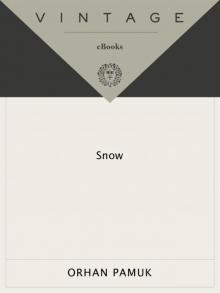 Snow
Snow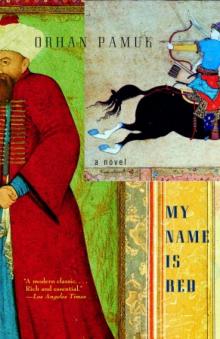 My Name is Red
My Name is Red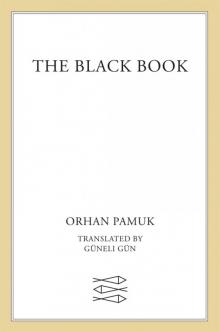 The Black Book
The Black Book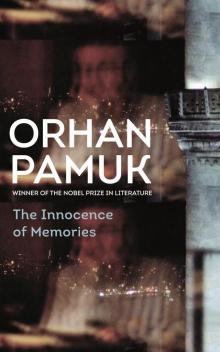 The Innocence of Memories
The Innocence of Memories The White Castle
The White Castle Other Colors
Other Colors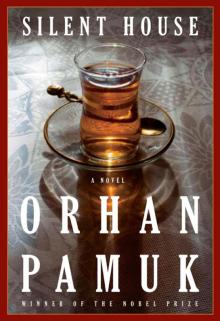 Silent House
Silent House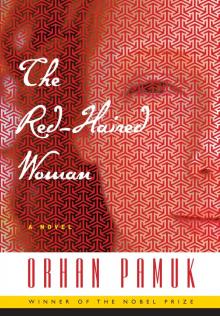 The Red-Haired Woman
The Red-Haired Woman The Museum of Innocence
The Museum of Innocence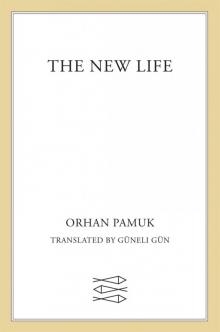 The New Life
The New Life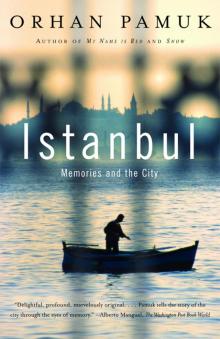 Istanbul
Istanbul